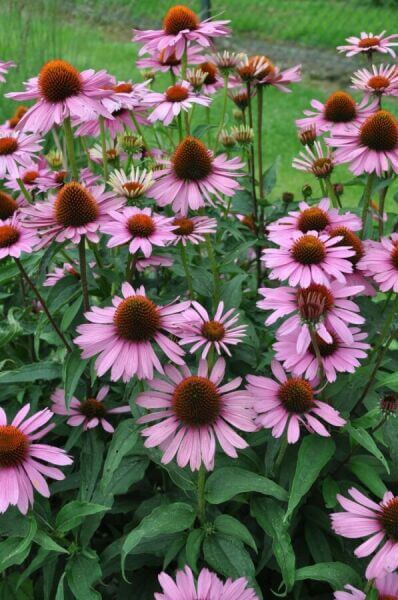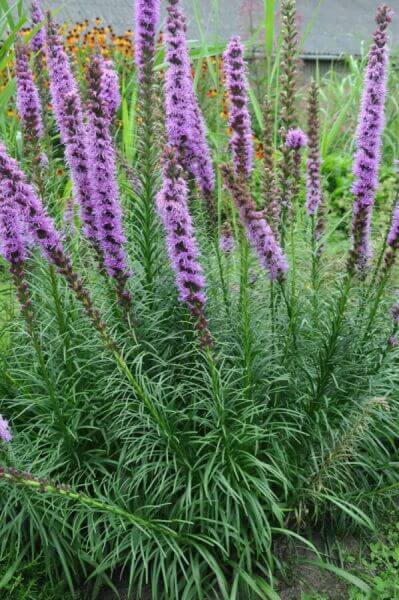Best Hedging Plants For Spring Interest
Best Hedging Plants For Spring Interest
Blog Article
Hedge Plants For Partial Shade
Boost your garden's allure with rich hedge ranges such as Yew (Taxus), Thuja, Laurel, Photinia, and Bamboo, commemorated for their structural integrity and ecological advantages.
Yew and Thuja offer evergreen protection and winter durability, while Laurel offers fast development and broad, aromatic leaves.
Photinia adds seasonal appeal with its lively red foliage, and Bamboo lends a low-maintenance, peaceful atmosphere.
These hedges enhance air quality, decrease sound, and develop tranquil, private spaces.
Proper planting, spacing, and upkeep ensure vigorous development and eco-friendly harmony.
Explore how these lavish ranges can raise your garden's beauty and well-being.
Secret Takeaways
Change Your Garden With Lush Hedge Ranges
- Select Yew for its dense, evergreen growth and exceptional longevity.
- Select Laurel for its quick development and broad leaves, guaranteeing quick privacy.
- Select Photinia for its dynamic seasonal foliage, which turns a striking dark red.
- Utilize Bamboo for a low-maintenance, winter-hardy hedge with aesthetic appeal.
- Area plants 2-3 per meter and prune frequently for optimal growth and health.
Popular Hedge Plants
When transforming a garden with lush hedge varieties, it's important to consider popular hedge plants such as Yew, Thuja, Laurel, and Photinia due to their distinct qualities and benefits.
Yew (Taxus) is highly esteemed for its longevity and dense, green growth, making it a prime option for sustaining landscapes.
Thuja is kept in mind for its evergreen foliage and robust winter season strength.
Photinia includes seasonal vibrancy with red leaves that darken gradually, producing dynamic visual appeal.
Laurel offers rapid growth and aromatic, broad leaves, perfect for fast privacy.
Additionally, Bamboo is an outstanding choice for ambiance, using a low-maintenance, winter-hardy alternative that improves the garden's aesthetic with its elegant, swaying canes.
These choices accommodate a variety of horticultural needs and choices.
Benefits of Garden Hedges
Garden hedges offer a multitude of advantages, making them a valuable addition to any landscape. These natural barriers are economical to implement and offer significant wind defense, boosting air flow and contributing to noise decrease. The dense foliage of hedges like Thuja and Beech ensures privacy by obstructing presence, producing a secluded and serene environment.
Hedges likewise play an important role in microclimate guideline, offering a stable environment that cultivates plant growth and minimizes temperature level changes. Their intricate leaf structures filter contaminants, improving air quality and contributing to a much healthier garden ecosystem.
Moreover, hedges stand out in noise decrease, absorbing and deflecting acoustic waves to lower ambient noise levels. This double functionality of offering both visual and acoustic personal privacy boosts the general harmony and aesthetic appeal of any garden.
Planting and Maintenance Tips
For an effective hedge, careful preparation of the planting area is important. Make sure the soil has proper pH and drain to support strong root advancement.
Space the plants properly for the chosen types. Water the hedge often during its initial growth phase, adjusting as needed with seasonal modifications.
Carry out a systematic pest control and illness prevention method, using chemical or organic treatments when required. Regularly inspect for aphids, termites, and fungal infections.
Apply mulch to retain moisture and suppress weeds. Seasonal pruning promotes thick development and air circulation, important for plant health.
Following these standards will assist you cultivate a lively, properly maintained hedge that boosts the charm of your garden.
Spacing and Trimming Standards
Spacing and Cutting Standards
Proper spacing and cutting are essential for cultivating healthy, visually appealing hedges. Adequate spacing makes sure each plant gets adequate nutrients, light, and air flow.
Follow these standards for optimal hedge maintenance:
- Spacing: Position hedge plants 2-3 plants per meter to encourage robust growth.
- Pruning Techniques: Regular pruning is necessary for maintaining preferred hedge height and shape. Trim brand-new development in summer season and cut back older wood throughout winter.
- Seasonal Care: Adjust cutting schedules and techniques according to seasonal requirements to make sure plant health.
- Hedge Height: Regularly display and cut to preserve the desired hedge height and attain consistent aesthetics.
Complying with these actions will guarantee your hedge prospers, improving both the appeal and functionality of your garden.
Picking the Right Hedge
Picking the Right Hedge
Choosing the appropriate hedge includes examining factors such as fully grown height, foliage density, and environmental resilience. Effective hedge plant selection requires comprehending each species' development qualities and site-specific flexibility.
For example, Yew (Taxus) uses outstanding longevity and thick growth, while Thuja is notable for its winter season resilience. get more info In addition, considering upkeep requirements is important; fast-growing species like Laurel or Privet need routine trimming, whereas low-maintenance alternatives like Bamboo or Ivy might be more effective for those seeking very little upkeep.
Ecological factors such as soil type, light accessibility, and wetness conditions ought to likewise guide the choice procedure. This careful method makes sure the selected hedges will grow, providing both functional and aesthetic advantages to the garden landscape.
Shipment and Planting Recommendations
To guarantee your hedge plants thrive, they ought to be provided by specialized carriers and planted quickly upon arrival.
Follow these vital actions for successful planting:
- Soil Preparation: Enrich the soil with raw material to enhance drainage and nutrient material.
- Planting Depth: Create a trench twice the width and equivalent to the depth of the root ball.
- Watering Techniques: Water completely after planting, keeping the soil regularly damp however not saturated.
- Mulching: Apply a layer of mulch to keep wetness and reduce weeds.
Consumer Assistance and Service
Offered the essential role of prompt assistance in horticultural pursuits, our customer assistance group is offered 6 days a week through telephone, e-mail, and social networks to use expert guidance and swiftly resolve any issues. Their dedication to quick reaction times guarantees client complete satisfaction by fixing questions connected to plant health, optimum planting methods, and maintenance schedules.

Response Time
Within 24 hours
This extensive support group, strengthened by a stellar 9.3/ 10 client ranking, highlights our commitment to improving the gardening experience for each customer.
Frequently Asked Questions
The Length Of Time Does It Consider Hedge Plants to Establish?
Hedge plants generally require one to three years to end up being totally established, with the precise period differing by species and growing conditions.
Effective care during this vital duration is necessary for robust development. Constant watering, vigilant weed control, and appropriate fertilizer application are pivotal in promoting strong root development.
For example, fast-growing types like Laurel might develop quicker, while slower-growing ranges such as Yew might take longer. Persistent maintenance accelerates the establishment process, resulting in healthy and thick hedges.
What Are the Best Hedge Plants for Privacy?
The question of the finest hedge plants for personal privacy involves evaluating evergreen and deciduous options.
Evergreen hedges like Thuja, Laurel, and Cypress provide year-round protection, making sure continuous privacy.
On the other hand, deciduous hedges such as Beech provide seasonal privacy, shedding leaves in cooler months.
Key upkeep suggestions for privacy hedges consist of regular trimming, fertilizing in spring, and proper spacing-- normally 2 to 3 plants per meter.
Additionally, constant watering and persistent weed removal are crucial for promoting healthy, thick growth.
Can Hedge Plants Bring In Wildlife to My Garden?
Yes, hedge plants can attract wildlife to your garden by offering essential advantages like shelter, food, and nesting websites, consequently enhancing local biodiversity. Yew, holly, and laurel are outstanding for bring in birds, while ivy supports a variety of pests.
However, it's essential to keep in mind that there are some drawbacks, such as increased upkeep to handle pests and regular upkeep. Carefully choosing and maintaining hedge ranges can assist balance these downsides and advantages, eventually cultivating a lively and sustainable environment in your garden.
Are There Any Blooming Hedge Plants Available?
Yes, there are flowering hedge plants available that can improve the beauty of your garden.
For example, Elaeagnus, also known as Olive Willow, produces fragrant white flowers in the fall, including a touch of beauty.
Photinia, another popular choice, showcases vibrant red leaves that mature into an abundant green, developing a vibrant visual effect throughout the seasons.
To make sure these plants flourish, it's vital to practice proper pruning strategies and seasonal maintenance, such as cutting new growth in the summer season and cutting down in the winter.
These steps will help preserve the health and visual appeal of your blooming hedges.
How Do I Prevent Insects in My Hedge Plants?
To prevent insects in hedge plants, employ natural insect control techniques and keep correct hedge care. Introduce helpful bugs like ladybugs, which take advantage of hazardous insects, to create a balanced community.
Regularly check your hedges for signs of invasion and promptly remove any affected parts to avoid the spread. Make sure the health of your hedges by using balanced fertilizers and offering adequate water.
Utilize mulching to retain soil wetness and appropriate spacing to minimize plant stress and promote robust growth. These practices jointly assist in lessening insect problems and preserving a healthy hedge.
Conclusion
In essence, choosing the right hedge ranges such as Yew, Thuja, and Laurel can change any garden into a peaceful haven. These plants supply year-round greenery, enhance visual appeal, and deal practical advantages like sound reduction and wind defense.
Appropriate planting methods, precise spacing, constant watering, and seasonal trimming are important for optimal development.
Reliable shipment services and professional consumer assistance ensure a smooth experience from purchase to planting, making it simpler than ever to raise your outdoor area.
Garden hedges provide a plethora of advantages, making them a valuable addition to any landscape. These natural barriers are economical to implement and supply significant wind protection, improving air flow and contributing to sound reduction. The thick foliage of hedges like Thuja and Beech guarantees personal privacy by obstructing exposure, creating a peaceful and remote environment.

Pruning Strategies: Routine pruning is vital for maintaining desired hedge height and shape. Cut new growth in summer season and cut back older wood during winter.
Report this page